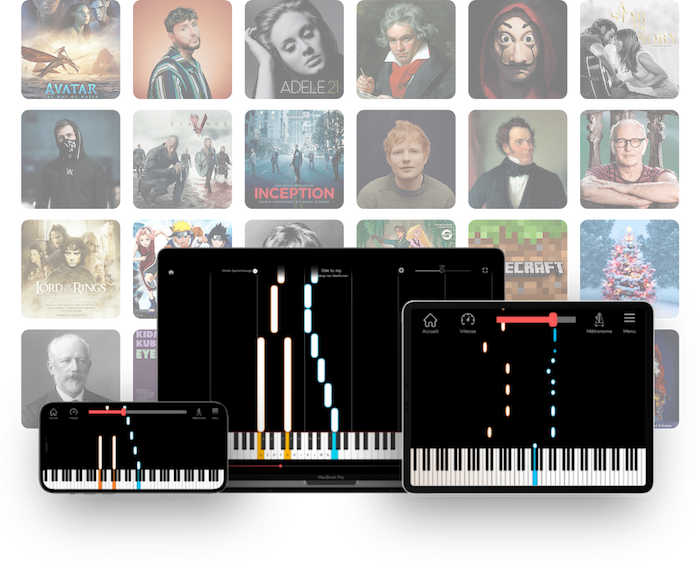
Would you like to learn to play the notes from Ode to Joy on the piano? We’d love to hear from you!
Ode to Joy is an iconic work by Ludwig van Beethoven, composed in 1824. This piece of music is universally recognised and adored for its celebration of brotherhood and human unity.
In this article, we will explore the notes of Ode to Joy adapted for the piano. We’ll start by examining the right-hand part, then the left-hand part, before coordinating them together to recreate the magic of this composition.
You’ll find practical advice, diagrams and video tutorials to guide you through each stage of your learning of this classic work.
At the end of this article, you’ll even have the chance to download the full score of Ode to Joy for piano, so you can immerse yourself fully in this enchanting music.
Ready to be swept away by this transcendental symphony? It’s time to plunge into Beethoven’s musical universe!
Bonus : you can also learn to play this song at your own pace on our interactive piano learning app La Touche Musicale.
Free download: >> >> The guide to learn 10 easy piano pieces.
Learn to play your favorite songs on the piano
The La Touche Musicale learning app offers more than 2,500 songs to play easily on the piano. Connect your piano to your device and learn to play them at your own pace while having fun.
Before you start learning Beethoven’s famous Ode to Joy on the piano, let’s take a moment to familiarise ourselves with the basics by exploring the layout of the keys on the keyboard. If you already have a good understanding of this concept, you can move straight on to the next stage: learning the notes with the right hand.
Here’s a representation of the keyboard to help you visualise the different keys and better understand their layout:

The name of the notes on a piano keyboard.
Look closely at the diagram of the piano keyboard above. You’ll notice a regular pattern in the arrangement of the black keys: they are grouped alternately in sets of two and three keys.
For example, if you’re looking for the note G, concentrate on the groups of two black keys. The note G is always to the left of the group of two black keys. Then press the white key to the left of the first key in that group, and you’ve found G!
The ability to quickly identify each note on the keyboard is essential if you are to be ready to play the notes of Ode to Joy on the piano.
Now that you’ve got a good grasp of how to find your way around the keyboard, let’s dive into learning the notes of Ode to Joy on the piano with your right hand! The right hand is often responsible for playing the main melody; it’s the musical element that sticks in your memory.
Let’s start by identifying the first note to be played in the melody of Ode to Joy: the note E.

E is the first note to be played with the right hand for the song Ode to Joy on piano.
Have you identified the note E correctly? Excellent! Now let’s explore all the right-hand notes that make up the melody of Ode to Joy. Now it’s your turn to play all these notes one after the other to reproduce the melody of this famous piano piece, performed with the right hand.
E – E – F – G – G – F – E – D – C – C – D – E – E – D – E – E – F – G – G – F – E – D – C – C – D – E – D – C – D – D – E – C – D – E – F – E – C – D – E – F – E – D – C – D – G – G – E – E – F – G – G – F – E – D – C – C – D – E – D – C.
Did you manage to play all the notes without difficulty? Keep practising and repeat this sequence of notes several times until your playing is fluid. When you feel comfortable with this part, you can move on to the left hand.

Ode to Joy on the piano: the notes of the right hand.
To enrich your learning and make it more interactive and entertaining, we offer you this first video tutorial. It uses the right-hand notes we identified earlier, allowing you to play them in rhythm.
When the notes appear on the virtual piano, play them on your keyboard by holding down the key for as long as the note on the screen is in contact with the virtual keyboard.
A word of advice: watch the video once to familiarise yourself with the beats and rhythms of the notes before playing them on your keyboard.
Excellent! You’ve now mastered the right-hand notes of Ode to Joy on the piano!
Now let’s move on to the next stage: playing the notes with your left hand.
La Touche Musicale app waits for you to play the right note with your right hand on your piano before moving on to the next one.
Let’s keep the momentum going! Before you start learning all the notes on the piano with your left hand, which is responsible for accompanying the music, let’s start by identifying the first notes to be played: the notes C and G.

C and G are the first notes to be played with the left hand for the song Ode to Joy on piano.
Have you identified the notes C and G? Very good! Let’s continue the sequence. Now play the following notes one after the other with your left hand on the keyboard:
C + G – C + G – E – F – G – C + G – C + G – E – F – G – C + G – F + G – F + G – F + G – G – D – G – C + G – C + G – E – F – G – C + G.
You’ve played the notes of the accompaniment to the famous song on the piano with your left hand – congratulations! Practise this sequence of notes in a loop so that you’re ready for the final stage of this adventure!

Ode to Joy on the piano: the notes of the left hand.
We’ve followed the same process as for the right hand: an interactive video tutorial showing you all the notes to play with your left hand. Visualise yourself navigating a virtual piano as the notes descend towards you. Be ready to play each note as it appears on the screen.
Get ready for a captivating musical experience!
The La Touche Musicale app waits for you to play the correct note with your left hand on your piano before moving on to the next.
Congratulations! You now have the ability to play the notes of Ode to Joy with both your right and left hands. That’s really impressive, isn’t it?
Now let’s dive into learning how to coordinate your two hands to play this composition on the piano.
Learning to play with both hands is a crucial stage for any beginner to the piano. It’s essential to remain calm and remember that initial difficulties with hand coordination are perfectly normal.
Don’t be too demanding on yourself. The challenges encountered at this stage can be emotionally taxing, but once overcome, the personal satisfaction will be all the greater.
Start small, and don’t set yourself over-ambitious goals from the outset. Aiming to play a two-handed piece in half an hour can often lead to frustration and even demotivation. Learning the piano should be a source of pleasure.
It’s perfectly normal to take several weeks to fully master a new piece. But once you’ve done that, you’ll be able to play your favourite piece with ease. With repeated practice, you’ll become so familiar with it that you’ll be able to play it from memory, without even needing to consult a score. That’s why we recommend our learning tool La Touche Musicale, which will come in very handy.
Here’s a practical tip: divide the piece into small sections (for example, 5 to 10 seconds).
Start by concentrating on the melody with the right hand for each short section, playing it several times. Then move on to the accompaniment with the left hand. When you feel comfortable with each hand separately for that section, try to synchronise them.
Once you’ve mastered one section, move on to the next using the same gradual approach. When you feel ready, start putting the different sections together. By following this gradual method, you will gradually be able to play the whole piece.

Ode to Joy on the piano: the notes of both hands.
In this latest video tutorial, you’ll be guided through the notes to be played with both hands. Follow the instructions in the video carefully and take the time you need to adapt.
If the rhythm seems a little too fast, don’t hesitate to slow down the video or pause it. This will allow you to position your fingers comfortably on the keyboard to play the notes of Ode to Joy on the piano.
Tip: with the interactive application La Touche Musicale, you won’t even need to pause the video: the application will wait patiently for you to play the right note before continuing. Honestly, it makes learning so much easier!
Ajoutez votre titre ici
The La Touche Musicale app waits for you to play the right notes with both hands on your piano before moving on to the next.
Congratulations! You can now play Ode to Joy in its entirety on your keyboard.
If you enjoyed this tutorial, you should know that we offer other tutorials in a wide variety of styles. Here are a few that might interest you:
Mission accomplished with our guide: you’re now ready to play Ode to Joy on the piano using both hands.
To complete this article, here’s a link to download the score of Ode to Joy in PDF format.
Now you’re free to play this piece to your heart’s content, wherever you are.
Don’t forget that for a learning experience that’s both fun and instructive, the La Touche Musicale application is there to help you!
See you soon for more piano tutorials!
Share the article on:
La Touche Musicale offers powerful AI apps to help you learn, play, and transcribe music effortlessly. Discover them below.
Ideal for: solo piano

Transcribe your piano pieces to sheet music with unrivalled precision.
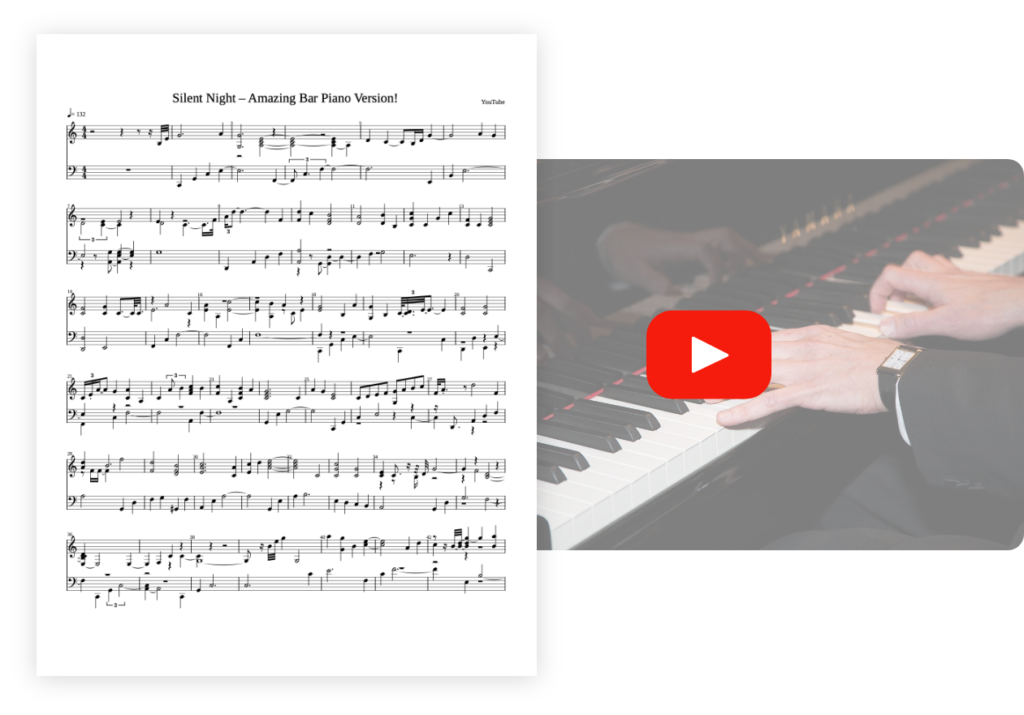
Ideal for: solo guitar

Transcribe your guitar tunes into tablature with unrivalled precision.
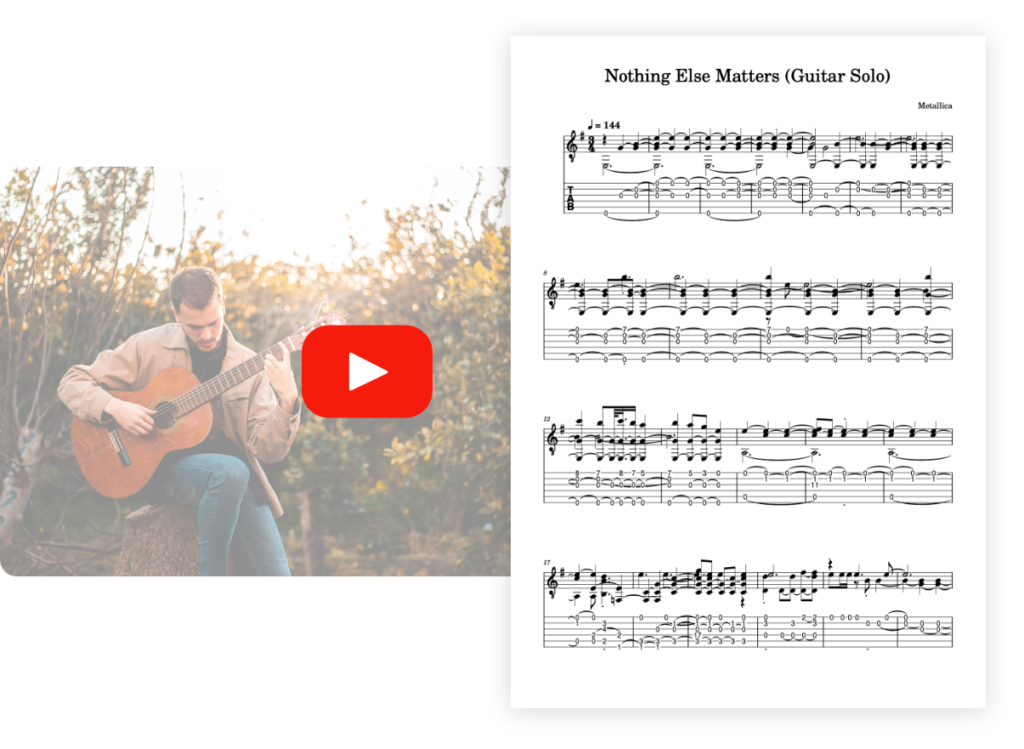
Ideal for: solo vocals

Transcribe your vocal recordings into sheet music with unrivalled precision.
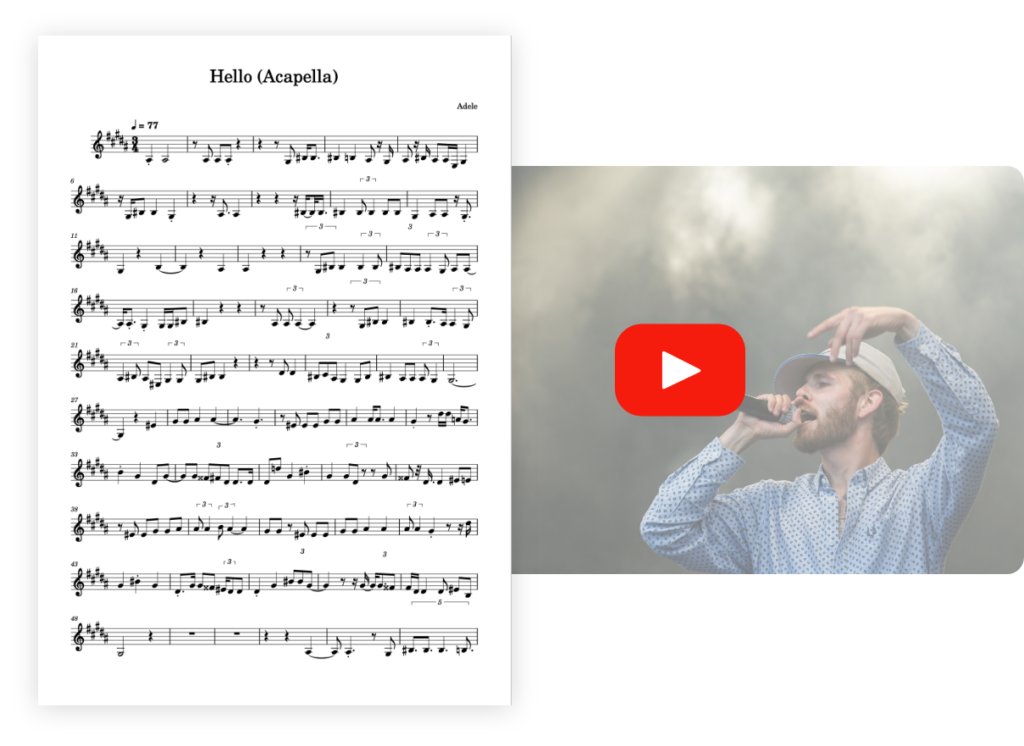
Ideal for: multi-instruments

Transcribe your multi-instrument tracks into sheet music with unrivalled precision.
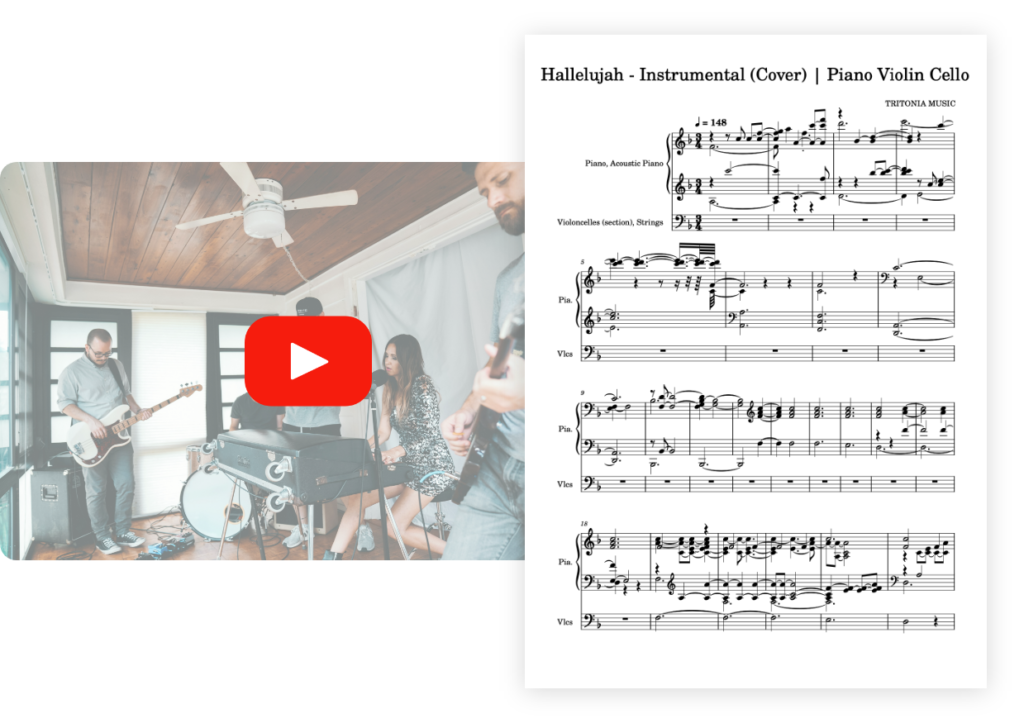
Ideal for: solo drums

Transcribe your drum tracks into sheet music with unrivalled precision.

Ideal for: solo violin

Transcribe your violin pieces into sheet music with unrivalled precision.
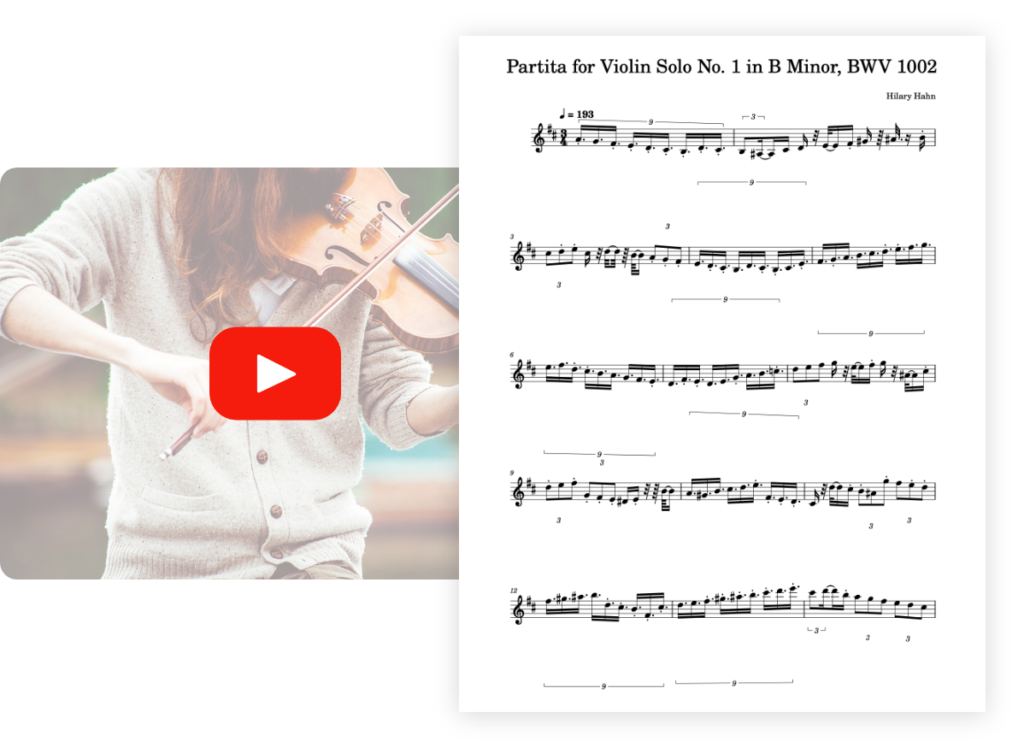
Optimized for: solo saxophone 🎷

Transcribe your saxophone pieces into sheet music with unrivaled precision.

Optimized for : solo flute 🪈

Transcribe your flute pieces into sheet music with unrivaled precision.
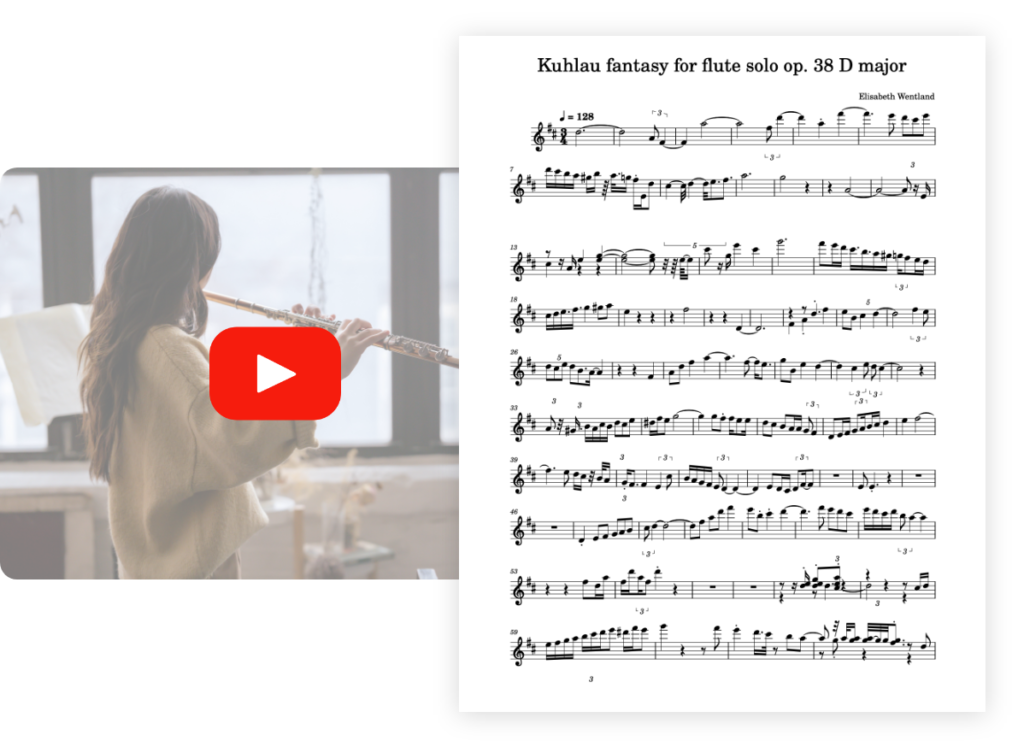
Optimized for : solo bass 🪕

Transcribe your bass pieces into sheet music with unrivaled precision.
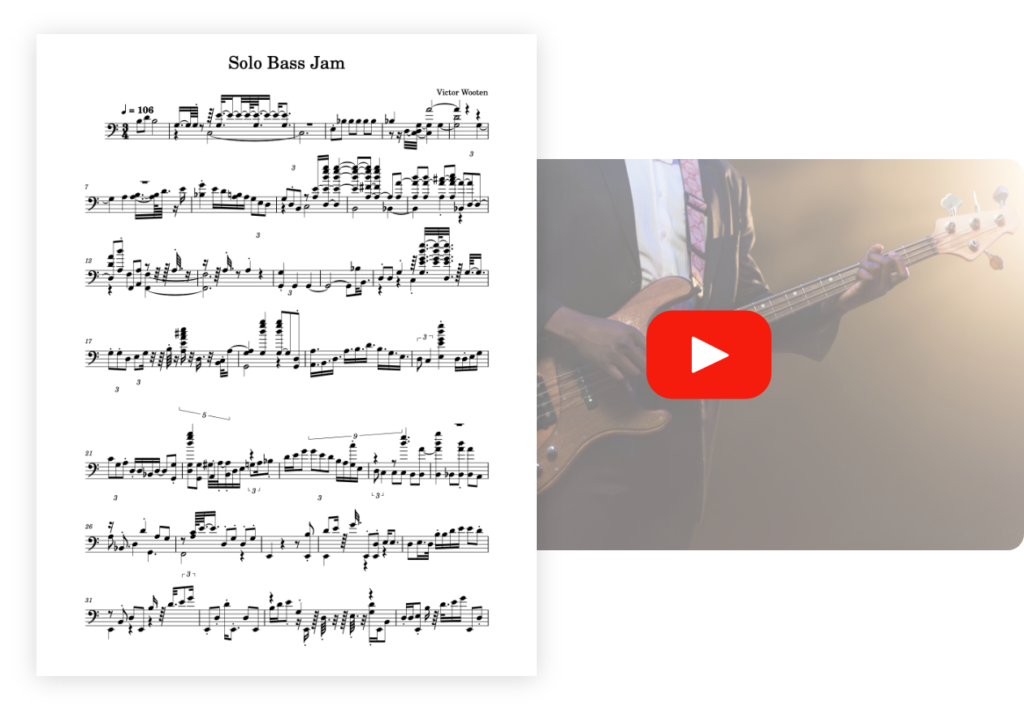
PianoGo lets you learn to play over 3,000 songs easily on the piano.
